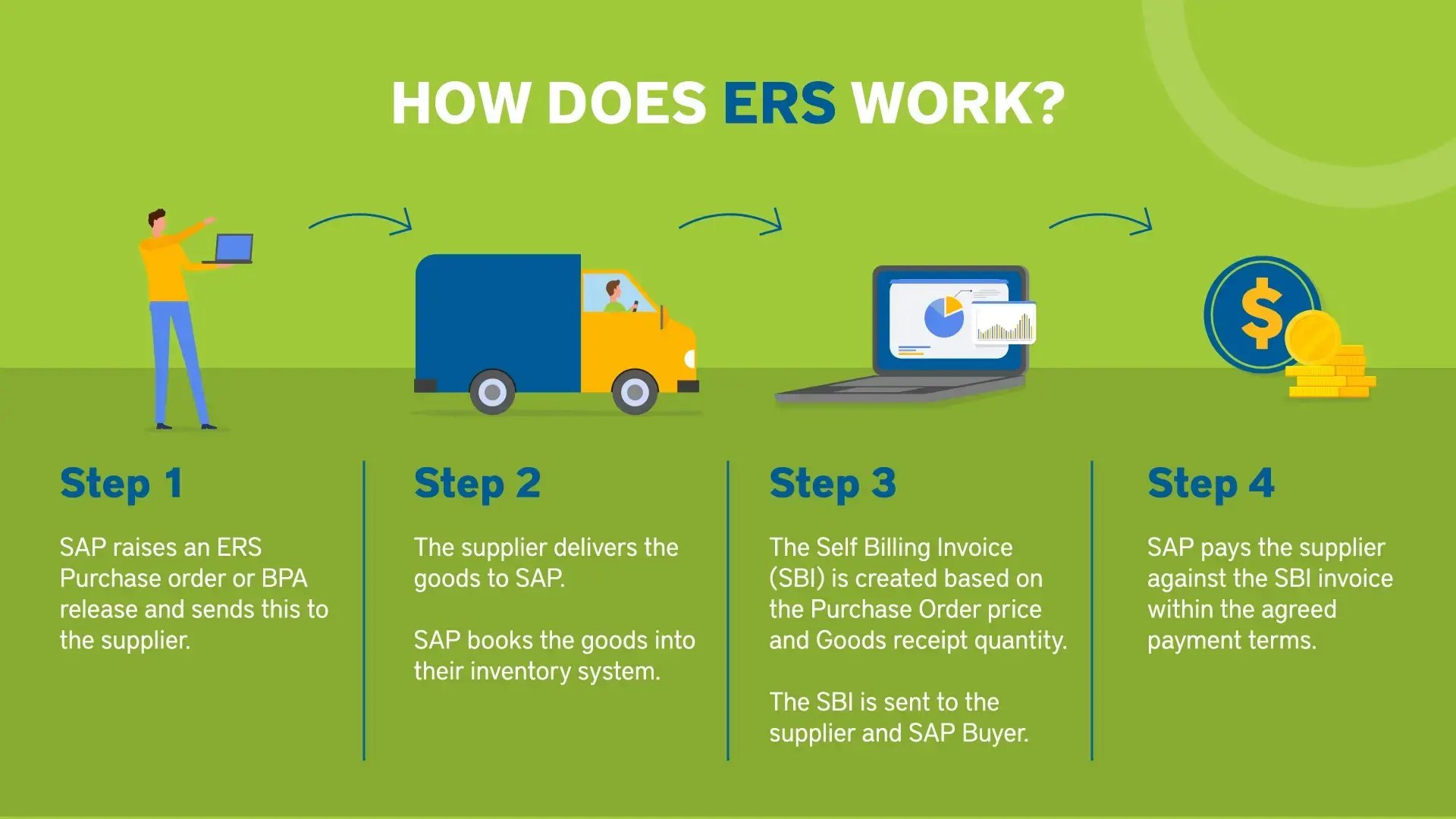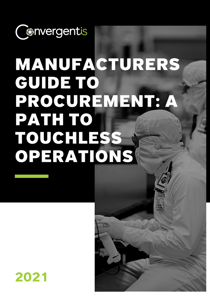Today, we know invoices as the itemized list of products purchased at a given price and terms of sale. However, their history tells a much more significant story. Originating on the Inshango bone in the Congo, the first known case of the invoice was both a mathematical tool and an item of record. The invoice has certainly undergone several revolutionary changes, evolving from stone to paper and later to digital formats. With the most recent revolution being a move towards automation, the logical question that comes to mind is, “what’s next?” After all, what could possibly be the next evolution after automation?

The answer? Complete invoice elimination through a process known as Evaluated Receipt Settlement (or ERS for short). ERS is the process of settling a goods receipt without human intervention, eliminating the requirement for invoice submission for a purchasing transaction. Below, we introduce the ERS SAP process and provide some guidance as to what this can mean for your procurement team.
ERS, Defined
Although ERS is far from a new SAP process, many users are unfamiliar with it, lack trust in their business processes or don’t understand how it applies to their goals as a business. Although ERS has been around for a while, it is still widely under-utilized.
To explain where ERS is applicable, it is first worth considering the background of the traditional SAP procure-to-pay process. At a very basic level, users must send a purchase order to an approved vendor, where they will then receive the goods from the vendor along with an invoice. These amounts will then need to be verified to ensure the values match. It is only after conducting this step that a payment can be made. Unfortunately, this process can be time-consuming and inefficient leading to slower payment times and reduced cash flow.
ERS aims to address this challenge and provide a unique solution for automated invoice settlement. In this process, suppliers don’t submit an invoice for a purchasing transaction. Instead, the system you set in place will automatically match information from a confirmed purchase order and goods receipt to enable SAP evaluated receipt. Since the purchaser has authorized the payment to occur when the goods arrive, the invoice becomes redundant.
Benefits of Evaluated Receipt Settlement
Evaluated Receipt Settlement provides several advantages, including the elimination of many of the repetitive reconciliation tasks that are often associated with the payment process, thereby enabling better allocation of time to value-added activities. Second, this process ensures that there are no variances between the billed amount on the supplier invoice and the amount received, with automatic reconciliation. These benefits have proven to result in savings more significant than automation alone.
A LESSON FROM FORD
To put the savings that come from a foundational change into perspective, consider the example of two well-known automakers, Ford and Mazda. By comparing these two manufacturers, we see that even with all the fine-tuning of existing processes, there is a limit to the improvements possible. Where real improvement is possible is fundamentally changing a time-intensive process.
In this example, Ford had over 500 people in their Accounts Payable department tasked with matching vendor invoices to purchase orders (POs), shipping receipts and warehouse documents. It was only when each document matched that a vendor could finally get paid. Unfortunately, most of the time, these numbers didn’t match.
In contrast, Mazda has an Accounts Payable team of 6 that didn’t face any difficulty when it came to matching purchase orders and invoices. The reason being that invoices were eliminated from their Accounts Payable process, with a re-engineered system and maintenance of long-term collaborative partnerships with their key suppliers.
The lesson? Rather than fine-tuning a process that may already be improved as much as humanly possible, it is better to change how you think about the problem, creating a new solution from scratch.
What ERS Means for Your Business
The example of Ford and Mazda presents a powerful example for modern-day invoicing processes. Although the invoice itself has evolved a long way from its original form as lines on rocks, there is only so far this step can be improved before it cannot be fine-tuned anymore. Instead, businesses must look at how we can make breakthroughs in performance by revolutionizing the way we do things, rather than “trimming fat” or “automating existing processes.”
The ERS SAP process then becomes the answer to reengineering a traditional process in a way that significantly increases the amount of invoices processed and reduces the total cost to do so. Consider that with ERS as a part of an already automated procurement process, a 6x improvement becomes evident in reduced costs and increased efficiency. For your workforce, this also means that the number of invoices each employee can process will increase significantly. In a 2018 study done by The Hackett Group, the number of invoices processed per full-time employee is brought from 6,892 (for paper) to 20,299 with automated processes including ERS. Taken together, the better allocation of human capital ensures that businesses can significantly increase their margins.
Reconciliation and Resolving ERS Discrepancies in SAP Procurement
When you receive Self Billing Invoices (SBIs) in SAP procurement, you may encounter discrepancies between the expected payment and the details on the SBI. It's crucial to address these discrepancies promptly to minimize disruptions to the payment process.
Quantity Discrepancies
1. Verify that the quantity SAP has received matches your records
If there's a discrepancy:
If you believe SAP has received less than what was sent, SAP can receive the additional quantity. This may result in an additional SBI but shouldn't delay your payment.
If you believe SAP has received more than what was sent, SAP will perform a Return to Supplier transaction, generating a Debit Memo to offset the overage in payment.
2. Unit price verification
Ensure the unit price on the SBI is accurate.
If the unit price is too low, notify your SAP buyer immediately. The receipt can be reversed, and goods re-receipted at the correct price, resulting in a credit for the initial transaction and a new SBI at the correct price.
If the unit price is too high, notify your SAP buyer immediately. SAP will create a return to supplier and debit memo for the overpaid amount, offsetting your total payment.
If a return to supplier is not possible, SAP may create a manual PO to compensate for the excess amount, ensuring timely payment.
3. Tax verification
Confirm that the tax amount on the SBI is accurate, calculated from the tax code in SAP's Purchase Order.
If the tax amount is incorrect, notify your SAP buyer immediately for an update.
Addressing these discrepancies promptly and accurately ensures smooth procurement processes and timely payments within SAP.
To learn more about how your procurement processes can be automated in a method of management by exception, download our free guide procurement guide.


